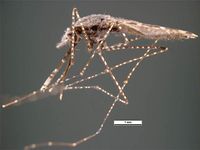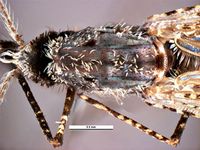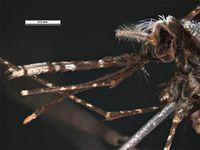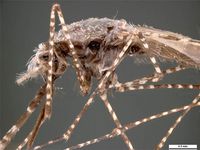Difference between revisions of "Anopheles farauti"
| Line 2: | Line 2: | ||
{{LiteratureDB|{{PAGENAME}}|browse,benefialsN}} | {{LiteratureDB|{{PAGENAME}}|browse,benefialsN}} | ||
[[File:Anopheles farauti CDC18751.jpg|300px|thumb|''Anopheles farauti'' (click on image to enlarge it)<br/>Author: James Gathany/CDC<br/>Source: [https://phil.cdc.gov/Details.aspx?pid=18751 Public Health Image Library]]] | [[File:Anopheles farauti CDC18751.jpg|300px|thumb|''Anopheles farauti'' (click on image to enlarge it)<br/>Author: James Gathany/CDC<br/>Source: [https://phil.cdc.gov/Details.aspx?pid=18751 Public Health Image Library]]] | ||
| − | <font color="#800000">'''''Anopheles farauti'''''</font> Laveran | + | <font color="#800000">'''''Anopheles farauti'''''</font> Laveran, 1902 |
| − | + | This mosquito is an important malaria vector occuring in Papua New Guinea, neighbouring islands and Australia. It bites mainly during the night and attacks humans, domestic animals and other mammals. ''A. farauti'' is common in coastal areas and breeds in brackish water rich in organic matter. For example, it is often found in coastal swamp and mangrove forests. | |
| − | + | Taxonomically, ''A. farauti'' is related to ''[[Anopheles punctulatus]]''. It forms a complex of 8 closely related sibling species, which includes, for example, the malaria vector ''[[Anopheles hinesorum]]''. Other members of the complex are less important malaria vectors like ''[[Anopheles irenicus]]'' which is not anthropophilic. These species also differ in their ecology like in their tolerance to brackish water during breeding. The distribution of this species complex extends from eastern Indonesia (Maluku island group) to some islands of Vanuatu. | |
| − | '' | + | |
| − | + | For a review see [[Parasites and Vectors (2011) 4 (89) - The dominant Anopheles vectors ...|Sinka et al. 2011]]. | |
| − | + | ||
| − | + | ||
Revision as of 20:31, 5 January 2018
| Literature database |
|---|
| 75 articles sorted by: |
| • year (recent ones first) |
| • research topics |
| • countries/regions |
| • list of natural enemies |
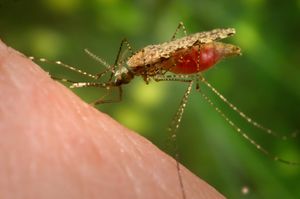
Author: James Gathany/CDC
Source: Public Health Image Library
Anopheles farauti Laveran, 1902
This mosquito is an important malaria vector occuring in Papua New Guinea, neighbouring islands and Australia. It bites mainly during the night and attacks humans, domestic animals and other mammals. A. farauti is common in coastal areas and breeds in brackish water rich in organic matter. For example, it is often found in coastal swamp and mangrove forests.
Taxonomically, A. farauti is related to Anopheles punctulatus. It forms a complex of 8 closely related sibling species, which includes, for example, the malaria vector Anopheles hinesorum. Other members of the complex are less important malaria vectors like Anopheles irenicus which is not anthropophilic. These species also differ in their ecology like in their tolerance to brackish water during breeding. The distribution of this species complex extends from eastern Indonesia (Maluku island group) to some islands of Vanuatu.
For a review see Sinka et al. 2011.
- Other images of Anopheles farauti (PaDIL - click to enlarge)
